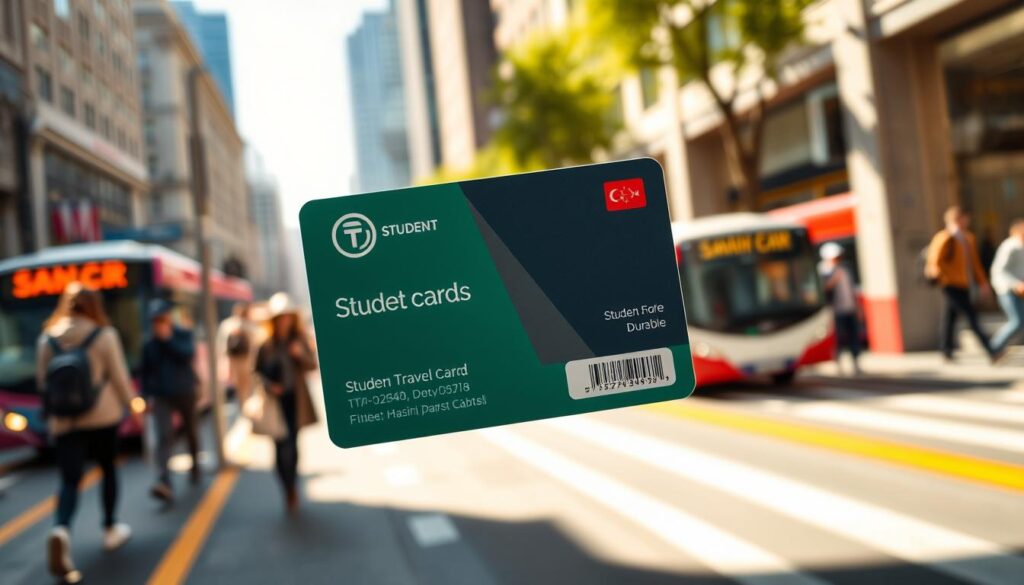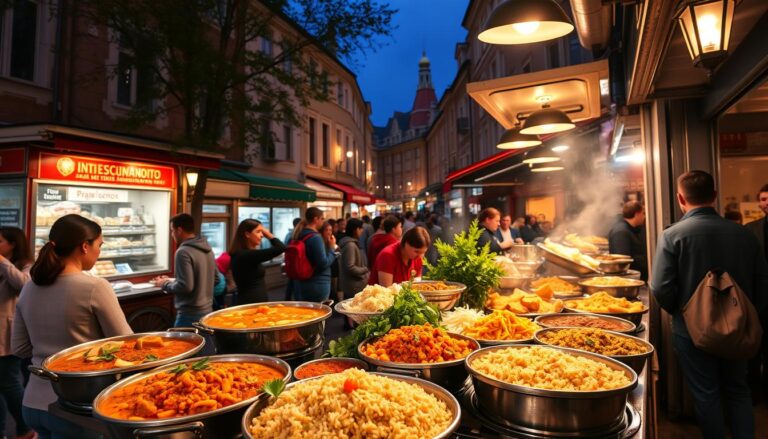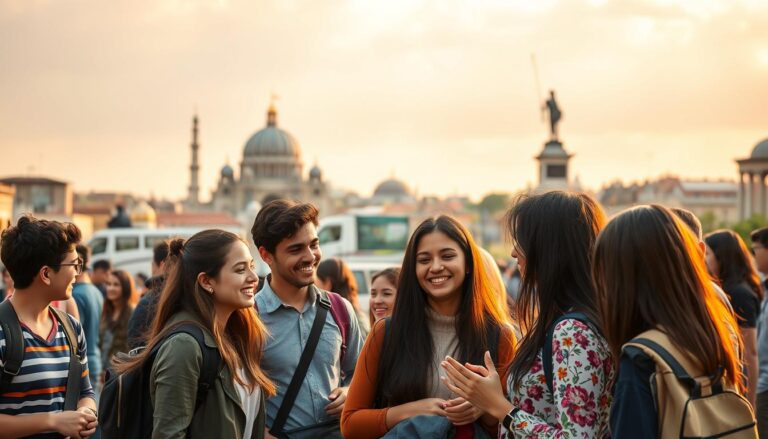Have you ever wondered how to explore a new country without breaking the bank or getting lost? For many international students, navigating a foreign city can feel overwhelming. But what if we told you there’s a simple, affordable way to travel with ease?
Public transport is a lifeline for students in Russia. It’s not only cost-effective but also incredibly efficient. Cities like Moscow and Saint Petersburg are hubs for buses, trains, and metro systems, making it easy to get around. Even if you don’t speak Russian, apps like Yandex and Citymapper can guide you seamlessly.
We’ve created this guide to help you master the art of traveling in Russia. From understanding fares to using the right apps, we’ll ensure your journey is smooth and stress-free. Let’s dive in and explore how you can make the most of your time here!
Overview of Russia’s Public Transportation Landscape
From historic roots to modern advancements, Russia’s transport system has evolved significantly. The country’s railway network, initiated in the 19th century, laid the foundation for its current infrastructure. Today, it’s a blend of tradition and innovation, serving millions daily.
Historical and Modern Developments
The railway system began under Nicholas I, connecting major cities and regions. The Trans-Siberian Railroad, spanning over 5,700 miles, remains a marvel of engineering. It links Moscow to Vladivostok, crossing eight time zones and showcasing the country’s vastness.
Modern developments have transformed this historic network. Cities like Moscow and St. Petersburg boast advanced metro systems. These hubs are not just functional but also architectural wonders, reflecting the nation’s cultural heritage.
Russian Railways (RZD), the state-owned operator, plays a pivotal role. It manages passenger services across the country, ensuring reliability and efficiency. Technological advancements, like digital ticketing, have further streamlined the system.
- Major train stations serve as central hubs, connecting urban and rural areas.
- Metro networks in large cities handle millions of trips daily, making them indispensable.
- Innovative solutions, such as contactless payments, enhance user experience.
This seamless integration of history and modernity makes Russia’s transport system a model of efficiency. Whether you’re exploring a bustling city or a remote region, the network ensures you’re always connected.
Navigating Public Transport in Russia for Students
Navigating a new city can be daunting, but with the right tools, it becomes a breeze. For students, understanding local systems is key to making your commute stress-free and efficient. Whether you’re hopping on a bus or hailing a taxi, knowing the basics can save time and money.
Key Considerations for International Students
When traveling in a new place, buying the right ticket is crucial. In many cities, you can purchase paper tickets, e-tickets, or use smart cards like the Troika card in Moscow. These options often come with discounts for students, so always carry your university ID.
Language barriers can be challenging, but apps like Yandex and Google Maps are lifesavers. They provide real-time information and directions in English. Additionally, many metro stations have bilingual signage, making it easier to find your way.
Local Tips for a Smooth Commute
Buses are a popular choice for getting around, but they can be crowded during peak hours. To avoid delays, plan your trips early in the morning or late in the evening. Marshrutkas, or minibuses, are another option. They follow specific routes and are faster than regular buses.
For shorter distances, taxis are convenient. Apps like Yandex.Taxi ensure fair pricing and reliable service. Always confirm the fare before starting your ride to avoid surprises.
Here are some quick tips for a hassle-free experience:
- Use smart cards for seamless travel across multiple modes of transport.
- Download offline maps in case of limited internet access.
- Keep small change handy for ticket purchases at stations.
With these tips, you’ll navigate the city like a local and make the most of your time abroad.
Exploring Modes: Metro, Bus, and Trains
Exploring a city’s transport options can be both exciting and overwhelming, especially in a new country. In Russia, the metro, bus, and train systems are the backbone of daily commuting. Each mode offers unique advantages, from speed to affordability, making them essential for navigating urban and rural areas.
Metro Networks and Their Cultural Significance
The metro is more than just a way to get around—it’s a cultural experience. In cities like Moscow and St. Petersburg, stations are often referred to as “palaces for the people.” These architectural marvels feature ornate designs, chandeliers, and mosaics that reflect the nation’s history and artistry.
Moscow’s metro serves over 8.5 million passengers daily, with trains arriving every minute during peak hours. St. Petersburg’s system is equally impressive, handling millions of trips annually. Both networks are efficient, affordable, and integral to city life.
Buses and Regional Variations
Buses are a versatile option, connecting urban centers to remote areas. In major cities, they operate frequently, with routes covering every corner. Outside hubs, services may run less often, but they remain a lifeline for many communities.
For example, in St. Petersburg, buses arrive every few minutes on popular routes. In smaller towns, schedules might be limited, but they still provide essential connections. Smart cards and apps make paying for rides seamless, ensuring a smooth experience.
| Mode | Key Features | Best For |
|---|---|---|
| Metro | Fast, frequent, and affordable | Urban commuting |
| Bus | Versatile and widespread | Regional travel |
| Train | Comfortable and scenic | Long-distance journeys |
Trains, especially high-speed options like the Sapsan, are perfect for longer trips. They connect major cities and offer a comfortable way to explore the country’s vast landscapes. Whether you’re commuting daily or planning a weekend getaway, these modes ensure you’re always connected.
Optimizing Ticket Purchases and Travel Apps
Finding the best way to buy tickets and use travel apps can make your journey smoother and more affordable. Whether you’re commuting daily or planning a trip, understanding your options ensures you save time and money.
Ticketing Options and Mobile Solutions
When it comes to purchasing tickets, you have several choices. Paper tickets are still available, but digital options like e-tickets and mobile registration are becoming increasingly popular. These methods are not only convenient but also often cheaper.
For example, apps like RZD for Passengers allow you to book train tickets in advance. Yandex.Taxi helps you secure reliable rides at competitive prices. Both apps offer real-time updates and easy payment options.
Transport cards, such as the Troika card in Moscow, are another great option. They work across multiple modes of transport and can be topped up online or at kiosks. Contactless payment methods are also widely accepted, making your commute seamless.
Here are some tips to optimize your experience:
- Compare prices across apps to find the best deals.
- Use transport cards for discounts and convenience.
- Download offline maps for areas with limited internet access.
If you’re traveling to other cities, consider how public transport in Samarkand offers affordable options for students. This can help you plan your trips more effectively.
By leveraging these tools and tips, you’ll navigate your way with ease and confidence. Whether it’s a short ride or a long journey, the right app and ticket choice can make all the difference.
Planning Long-Distance and Multimodal Journeys
Planning a long-distance journey can seem overwhelming, but with the right tools and knowledge, it becomes manageable. Whether you’re traveling across vast landscapes or hopping between cities, understanding your options ensures a smooth ride.
Understanding Train Routes and Schedules
Trains are a popular choice for covering long distances. Russian Railways (RZD) offers extensive networks connecting major cities and remote areas. Timetables are precise, so punctuality is key to avoiding delays.
Route maps are essential for planning. Online resources and apps like RZD for Passengers provide real-time updates and booking options. These tools help you find the best connections and reserve seats in advance.
For multi-day trips, consider sleeper trains. They offer comfort and convenience, allowing you to rest while covering long distances. Always check schedules to ensure smooth transfers between routes.
Air Travel, Coaches, and Alternative Routes
Air travel is ideal for saving time on long trips. Flights connect major hubs quickly, but booking in advance can save costs. Apps like Aeroflot and S7 Airlines simplify the process.
Coaches are another option, especially for shorter distances. They are affordable and connect smaller towns not served by trains. However, schedules may be less frequent, so plan accordingly.
For alternative routes, consider combining modes of transportation. For example, take a train to a nearby city and then a coach to your final destination. This approach offers flexibility and can be cost-effective.
| Mode | Advantages | Best For |
|---|---|---|
| Train | Comfortable, scenic, and punctual | Long-distance travel |
| Flight | Fast and efficient | Time-sensitive trips |
| Coach | Affordable and flexible | Regional connections |
Drivers and support staff play a crucial role in ensuring a smooth journey. Their expertise and assistance make long-distance travel more enjoyable. For students at institutions like Perm State Medical University, these tips can make exploring the country easier and more affordable.
By leveraging these insights, you’ll master the art of planning long-distance and multimodal journeys. Whether it’s a weekend getaway or an extended trip, the right preparation ensures a stress-free experience.
Student Travel Cards and Discounts: Getting the Best Deals
Travel cards are a game-changer for those looking to cut costs on daily commutes. For students, these cards offer significant savings and convenience, making them an essential tool for navigating the city. Whether you’re traveling by bus, train, or metro, having the right pass can simplify your journey and reduce expenses.
Application Process and Required Documents
Applying for a student travel card is straightforward. You’ll need a few key documents: your passport, student ID, and a recent photograph. These are essential for verifying your identity and eligibility. Once submitted, the process is quick, and you’ll receive your card in no time.

After receiving your card, activation is simple. Most metro stations have dedicated offices where you can complete the process. Just bring your card and ID, and the staff will assist you. Remember to keep your personal data updated, especially if you’re using services like the ISU portal.
Here are some benefits of using a student travel card:
- Discounted fares for daily commuting.
- Seamless travel across multiple modes of transport.
- Convenient top-up options at metro stations or online.
For those exploring other cities, Tashkent’s public transport system also offers affordable options for students. This makes it easier to plan trips and save money while traveling.
With the right card, you can enjoy stress-free commutes and focus on making the most of your time abroad. Whether you’re heading to class or exploring the city, these passes ensure you’re always connected.
Conclusion
Navigating the vast and efficient transportation networks in cities like St. Petersburg and Nizhny Novgorod can be a rewarding experience. With reliable services and accessible apps, planning your trips becomes effortless. Whether you’re using the metro, bus, or train, timely information ensures smooth journeys.
Student travel cards offer significant savings, making daily commutes affordable. Always rely on official websites and apps for accurate schedules and updates. These tools are essential for exploring new routes and regions without hassle.
Careful planning and using the right resources can enhance every trip. From short rides to long-distance travels, understanding local systems is key. For those considering further studies, exploring options like MBBS in Russia can open doors to affordable education and enriching experiences.
Stay informed, plan ahead, and make the most of your time in this vibrant country. With the right approach, every journey becomes an adventure.





